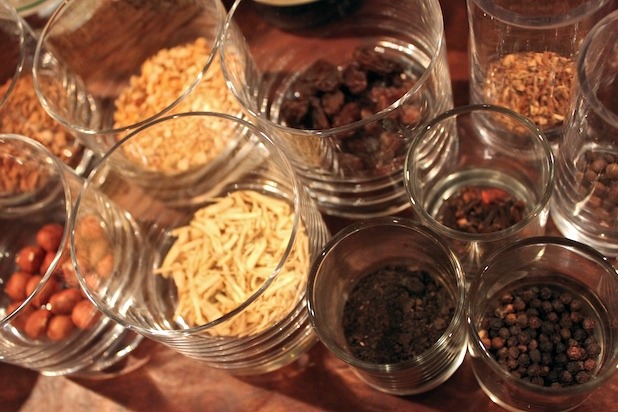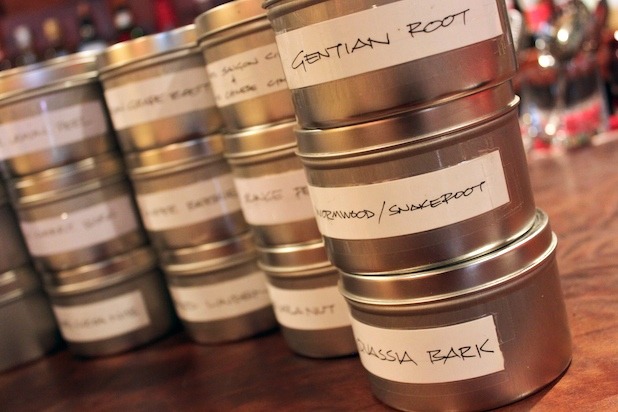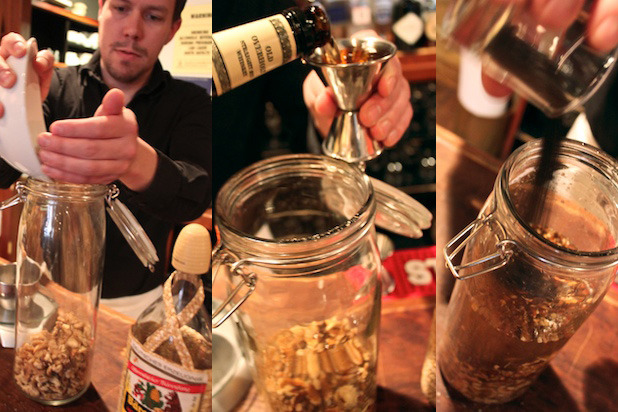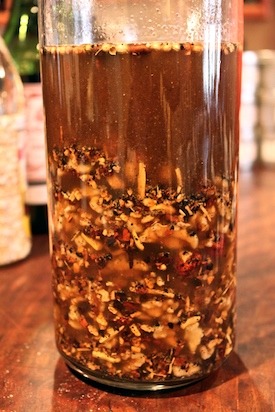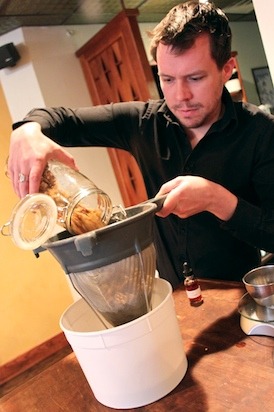A Lesson In How To Make Bitters Slideshow
How to go about pairing the right bitters with the right cocktail? Says Dan, "Generally speaking, while the role of bitters in cocktails should be subtle and nuanced, you want them to play nicely and don't want them to get lost. You might want woody, aggressive, smell-them-across-the-bar bitters with Scotch; herbaceous, maybe even floral bitters with dry gin; rich and spicy yet smooth bitters with mezcal. But then again, with a tempered, balanced hand, anything's possible."
Making a "Base" Bitters Batch
Dan advises that first-timers should start out by making a large batch of "base" bitters that you can divide up into smaller quantities and experiment with. "If you were cooking you might think of it as a kind of master sauce that you could add to then tweak."
Sourcing Your Ingredients
Sourcing some of the more obscure ingredients, like gentian and quassia bark, can be one of the bigger challenges in making bitters at home. Dan recommends looking for them in medicinal herb shops and apothecaries (like Flower Power in New York's East Village), or online at sites like Starwest Botanicals. As for the fruits, spices, and more common herbs, he says you don't have to look further than your local farmers' market. "Just keep in mind that you'll have to dry out the herbs, fruits and their peels."
Choosing the Neutral Grain Spirits
For the neutral grain spirits base, Dan likes to use Polmos' 192-proof Spirytus Rektyfikowany, which he found at his local liquor store in Greenpoint, Brooklyn. Though he says any high-proof vodka works too — higher proof spirits are best for extracting flavors.
Adding Aromatics and Spirits
All of the aromatics and spirits get added together at the same time in a large sealable jar (50-70 ounces). The mixture will need to sit and steep for about 3-4 weeks. "I usually hit gold around three and a half weeks, more than five and you're really almost past the point of no return," he shares.
The Importance of the Shake and Taste
You'll need to shake your bitters mixture vigorously once daily during the weeks-long steeping process. Tasting regularly is important as well, so that you become sensitive to how the flavor is changing. "Put a few drops on your hands and rub them together, then cup your nose and inhale. Others insist on putting a few drops in a glass of soda water or tasting them directly on your tongue, but I've found that the former dilutes the flavor too much and the other destroys your palette for 20 minutes."
Clarifying the Bitters
Dan shares that one of the cooler tricks he's learned in the process of making bitters is the best way to clarify them. Once the mixture has steeped long enough to achieve the desired flavor, he recommends layering cheesecloth in a chinois sieve and passing the mixture through into a nonreactive vessel.
Break out the Turkey Baster
After passing the bitters mixture through the chinois, let that sit for another day or two to allow all of the micro-particles to settle at the bottom. Once they have, decant the liquid or use a turkey baster to extract the bitters from the clean, sediment-free area right near the surface. Says Dan, "Gravity will be much more of a friend in this case than a French Press, paper coffee filter, or colander will ever be."
Transfer into a small dropper bottle for easy use when creating cocktails.

